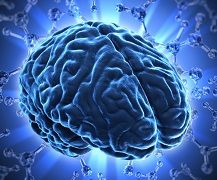Article
Refining Deep Brain Stimulation Technique Reduces Post-Surgery Complications
Author(s):
Deep brain stimulation is the most frequently used neurosurgical procedure for movement disorders. Patients generally experience few surgery-related problems, but a range of complications is possible.

Used in the United States since 1997, deep brain stimulation (DBS) is now the most frequently used neurosurgical procedure for movement disorders including essential tremor, Parkinson's disease and dystonia. Patients generally experience few surgery-related problems, but a range of complications is possible. The profile of complications appears to have changed as surgeons accumulate experience and research leads to modified surgical technique and equipment. A 14-year review of a single surgeon’s cases appeared ahead-of-print in the journal Neuromodulation. It indicates that DBS’s risks are very low compared to other neurosurgical procedures.
The author's purpose was to track technique changes and the most common hardware-related complications associated with DBS over time, and document interventions that can be used to avoid them.
In this case series, the author retrospectively reviewed 432 patients who underwent 1077 procedures. He compared results before and after significant surgical techniques were implemented.
Because hemodynamic complications (hypertension, hypotension, tachycardia, and bradycardia) are common during surgery, an experienced anesthesia team is critical. Clinicians need to make certain that the patient's preoperative blood pressure is well controlled. Additionally, he advises treating depression to the point that the patient is stable before the procedure. Antiplatelet or anticoagulant medications should be stopped 2 weeks before surgery.
Replacing the high-profile plastic cap with the low-profile Stimloc system decreased scalp infections significantly.
Adding a 5-day course of oral antibiotics after the perioperative IV antibiotic also decreased systemic and scalp infection.
Hardware complications (lead fracture or disconnection) occur in 5—27% of cases. After a previous analysis, this surgeon altered his technique to isolate the lead from the skin surface at both the cranial and retro-auricular incision. Subsequently, lead fracture rate and infection rate decreased.
Although risks are very low compared to other neurosurgical procedures, DBS is an elective procedure that requires extensive care and precision. The author concludes that careful surgical technique can minimize complications.





